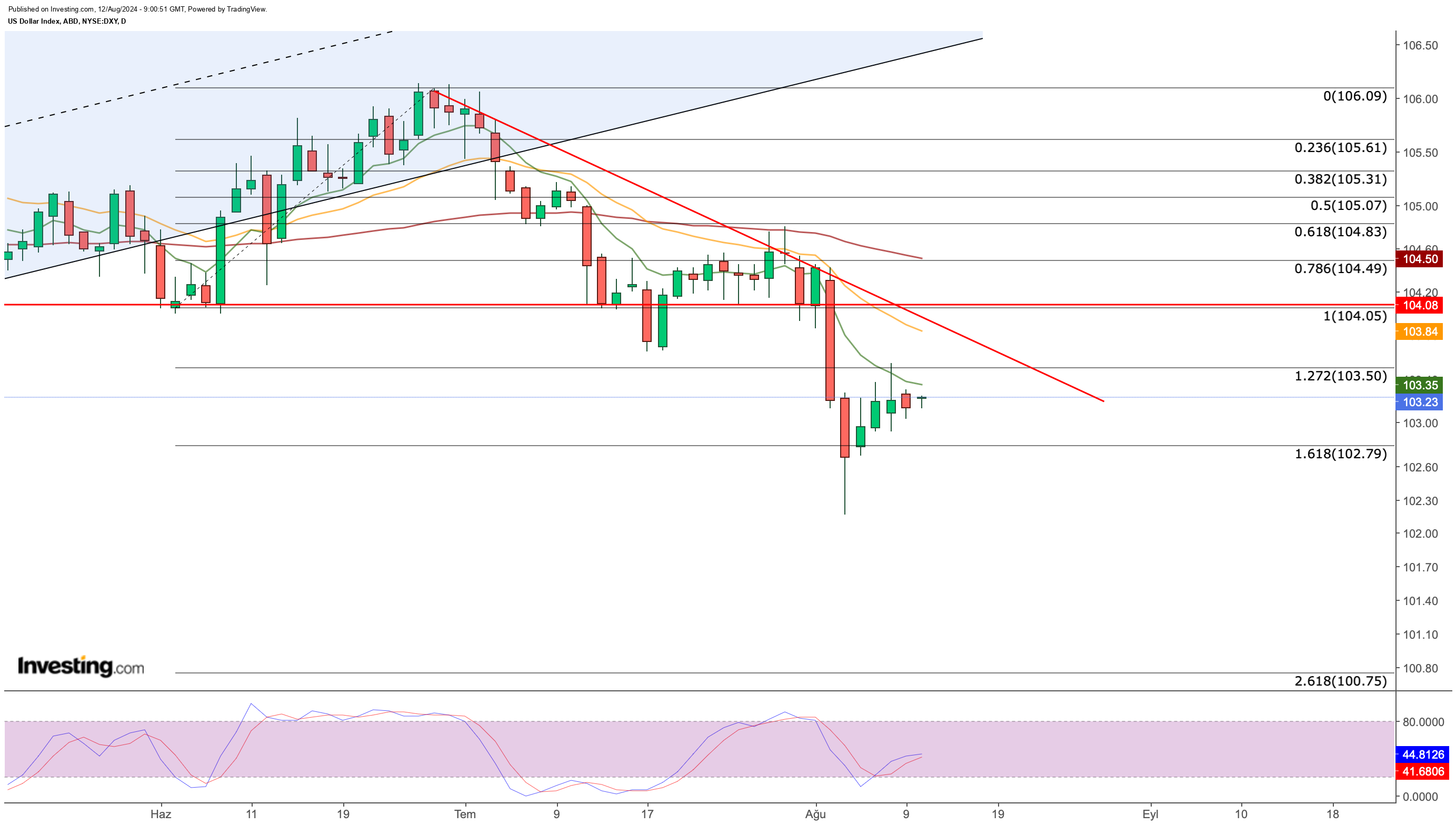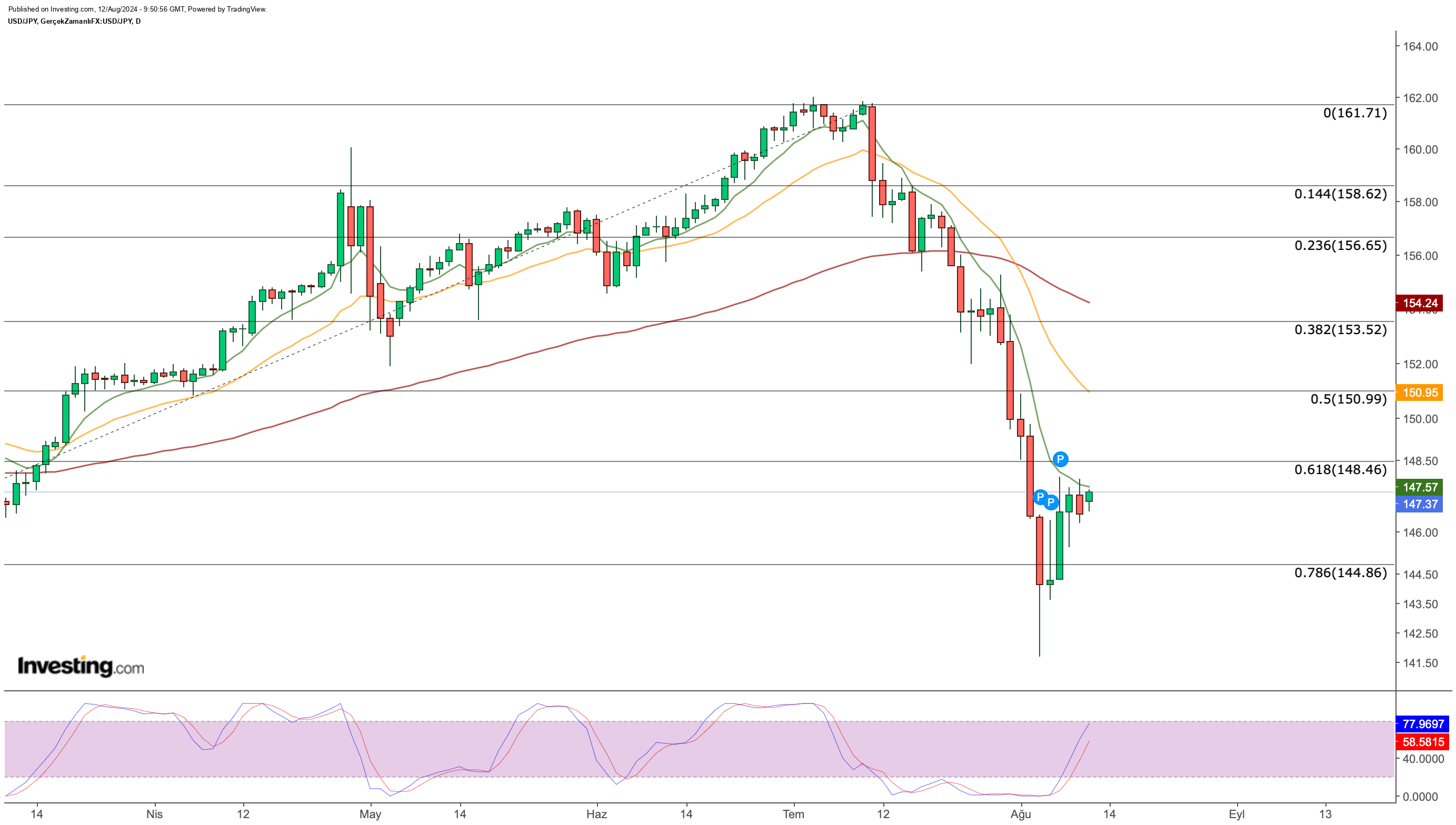- The US dollar has been attempting to stage a recovery.
- But, the greenback remains in a broader downtrend.
- Retail sales, CPI data could ignite a move in the US dollar index.
- For less than $8 a month, InvestingPro's Fair Value tool helps you find which stocks to hold and which to dump at the click of a button.
The past week has been marked by intense volatility as investors grapple with the implications of weakening economic data. A sharp decline in US employment figures, coupled with slowing manufacturing activity, has fueled recession fears and triggered last week's market sell-off.
The US dollar, which had surged on safe-haven demand, experienced a brief respite as market sentiment improved. However, the currency's long-term trajectory remains dependent on the Federal Reserve's monetary policy stance.
With inflation still elevated, the Fed faces the challenging task of balancing the need to cool price pressures with the need to avoid a recession. The upcoming release of US CPI data will be closely watched for clues about the central bank's next move.
While the market has shown signs of resilience, the potential for renewed volatility remains high. Investors should adopt a cautious approach and closely monitor economic indicators for further insights.
Is This the Calm Before the Storm?
The week has started quietly, partly due to a holiday in Japan, but attention is now focused on upcoming US inflation data. Risk appetite will hinge on this week’s releases.
US Consumer Price Index (CPI) data will be announced on Wednesday, with additional reports on Japan’s Q2 growth and industrial production, US retail sales, scheduled for Thursday. On Friday, the Michigan Consumer Confidence Index will offer insights into US consumer sentiment.
US inflation data will be pivotal. Last month, the US recorded its first negative monthly inflation in four years, with annual inflation dropping to 3%. If this trend continues, especially with an annual rate falling below 3%, it could provide clarity on the Federal Reserve's stance and potentially ease market pressures. Lower inflation may boost risk appetite by signaling a potential decrease in borrowing costs.
Conversely, if CPI and retail sales data exceed expectations, they could reignite market uncertainty. Higher inflation may make the Fed hesitant to ease monetary policy and revive recession fears as a result. Market participants anticipate at least three rate cuts from the Fed this year, with some predicting up to 100 basis points of easing.
US Dollar Index Attempts to Recover
After breaking its support at 104 last week, DXY continued its downward trend until Fib 1.618 at the average level of 102.8 and turned its direction upwards after finding support in this area.

This week, the DXY aims to recover, facing immediate resistance between 103.25 and 103.5. If it remains below this range, the index may continue its downtrend toward the 100 level.
Continued weakness in the dollar will likely depend on further indications of the Fed's potential rate cuts. A daily close above 103.5 could signal strength in the US economy and suggest that the Fed might act more aggressively on rates than previously anticipated.
USD/JPY: Japanese Yen's Recovery Slows Amid Mixed Signals
The USD/JPY pair fell sharply over the past two weeks due to the unwind of carry trades, dropping to the 141 level, which mirrors early-year lows.
The pair ended the week at 147 after stabilizing around 144 (Fib 0.786) for most of the previous week. Japanese market holidays on the week’s first trading day kept USD/JPY trading volumes low.

Expectations of narrowing interest rate differentials between Japan and the US initially bolstered the yen. However, recent comments suggest the Fed may delay rate cuts, leading to a potential reversal. The upcoming inflation data and insights from central bankers at the Jackson Hole meeting will likely influence USD/JPY.
Since last month, USD/JPY's downtrend began with speculation about a Bank of Japan policy shift and accelerated as these expectations were realized. Investors rapidly closed low-cost yen borrowings in favor of higher-yield assets.
While the pair shows some recovery towards 147, it faces technical resistance between 147.5 and 148.5. Barring a break through this resistance, USD/JPY may consolidate between 144 and 148. A rebound in the dollar could push the pair towards the 150-153 range.
***
This summer, get exclusive discounts on our subscriptions, including annual plans for less than $8 a month.
Try InvestingPro today and take your investing game to the next level.

Disclaimer: This article is written for informational purposes only; it does not constitute a solicitation, offer, advice, or recommendation to invest and is not intended to incentivize asset purchases in any way. I would like to remind you that any type of asset is evaluated from multiple perspectives and is highly risky; therefore, any investment decision and associated risk remains with the investor.
